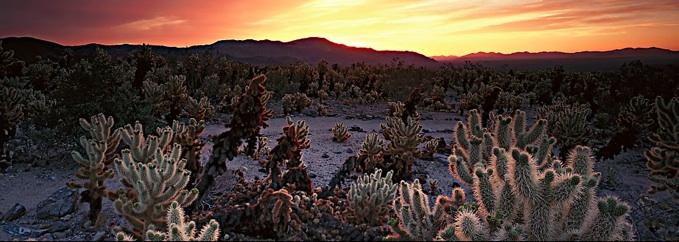A geologic showcase that is a climber's gymnasium, plus two different desert settings, are on display in Joshua Tree National Park. Straddling the geographic divide that splits the Mojave Desert from an element of the Sonoran Desert, the park located about two hours east of Los Angeles in Southern California is both a day tripper's paradise and an adventurer's escape.
Though it draws its name from the highly distinctive stands of Joshua tree with their contorted limbs capped by green spikes, the national park's name no doubt could have been just as closely associated with its boulder fields.
As distinctive as the trees, if not more so among climbers, the geologic rubble in varying stages of decomposition makes Joshua Tree a frequent destination for those who enjoy bouldering or honing their skills on granite walls and outcrops. Youngsters are drawn to the mazes of some of these boulder fields for games of hide and seek, while campers seeking a weekend reprieve from the city and work find the campgrounds with their rock backdrops perfect.
Joshua Tree also overflows with diverse desert vegetation and wildlife. There are intriguing chollas, the so-called "jumping" cactus quick to impale inquisitive fingers, and odd-looking ocotillos with their long spindly limbs that bear reddish flower spikes in April and occasionally again in the fall.
Spend any time in either the Mojave or Colorado deserts in the park, and exhibit enough patience, and you just might be rewarded by the appearance of a walking fossil, the desert tortoise. These landlubbing cousins to water-going turtles are believed to have walked the earth for 15 million years or more. In Joshua Tree, they live in burrows they dig in the desert floor and survive for upwards of 80 years on vegetation and rainfall they at times capture in depressions they scoop in the earth.
But as spectacular as the days can be in the park, so, too, are the nights. As flames from campfires leap skyward as day ends, the park's night skies take over, revealing the cosmos in spectacular clarity thanks to the relative lack of light pollution.
Traveler's Choice For: Climbing, wildlife, desert vegetation, camping, geology, photography.







